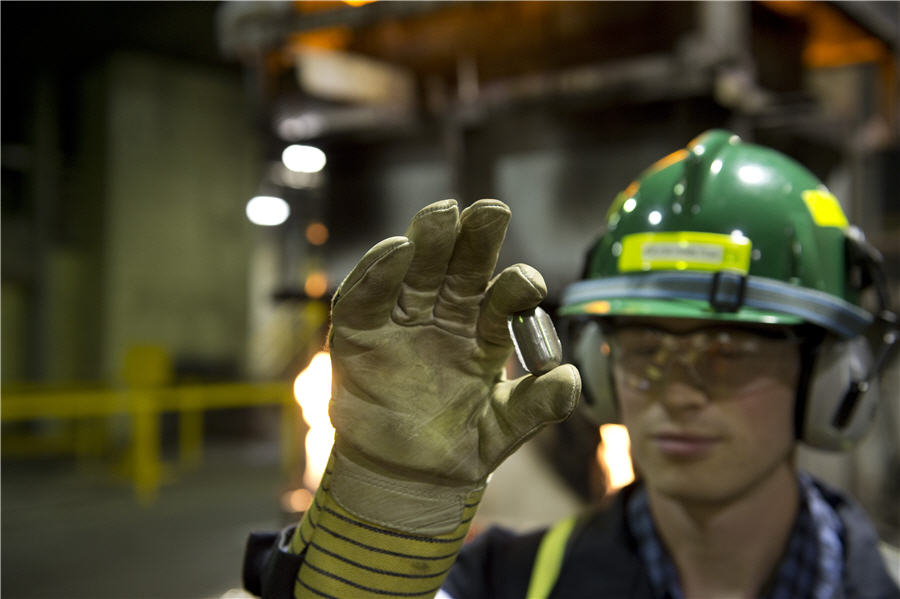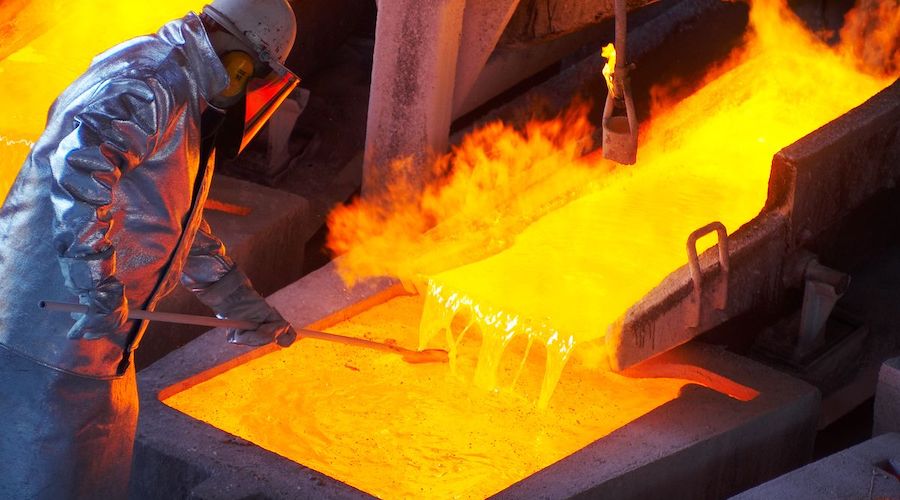Mixed hydroxide precipitate — the new class one nickel

We’ve all read about the push for de-carbonization, which is the primary driver for the battery mega-factory boom. All of these factories need nickel and cobalt for their products, but mostly they need nickel.
According to research and consulting firm Wood Mackenzie, there is a general consensus that about 200,000 tonnes of nickel went into battery precursors for rechargeable batteries last year and the expectation this year is that this will increase to as much as 300,000 tonnes, which is close to the availability of Class I briquettes and powder.
The problem is that years of low nickel prices hammered Western Class I nickel producers and many of them scaled back or shut down. In the last ten years we have seen Cuba’s Nicaro, Queensland Nickel’s mine of the same name, Votorantim’s SMP, and First Quantum’s Ravensthorpe nickel operations all shuttered (with Ravensthorpe coming on and off as nickel prices dictated profitability).
New Caledonia’s Goro operation has continued to operate but well under capacity, and it has been the same story for Sumitomo’s Ambatovy in Madagascar. The result was that a lot of Class I nickel (and high purity nickel oxide such as from Queensland Nickel, Nicaro and Goro) came off the market with no new greenfield projects coming online to meet demand when it began to rise.
In response, battery manufacturers started to work backwards, looking for new nickel sources that would allow for interchangeable substitution between metal briquettes, powder and oxide. Crude forms of nickel sulphate (NiSO4) from platinum group metal (PGM) refiners, such as Sibanye-Stillwater and Impala, saw payable nickel increase as demand increased. However, the availability of this material was limited, so the battery industry moved on to look at intermediates that would behave similarly to nickel briquettes or nickel powder.
The available options were mixed sulphide precipitate (MSP), basic nickel carbonate (BNC), and mixed hydroxide precipitate (MHP). All of these are less expensive to produce than briquettes, powder or oxide because they are an intermediate to making that product. In addition, they all sell at a discount to London Metals Exchange (LME) prices, as opposed to briquettes, which are LME deliverable, and powder/oxides, which are typically priced at or greater than LME depending on application.
MSP, which is typically 55% nickel, is produced by exposing high pressure acid leach (HPAL) solutions to hydrogen sulphide, which is a lethal gas. Ambatovy, Glencore’s Minara, Sherritt’s Moa Bay, and Sumitomo Metals Coral Bay and Taganito, all produce MSP. Finnish producer Terrafame also produces MSP from a heap leach operation.
Basic nickel carbonate sits between 40-50% nickel. It was the intermediate of choice for Caron process plants [which were energy intensive and relied on reducing gases to convert the laterite ore into one that could be easily leached in an ammonia solution allowing for recovery as BNC prior to refining into final product], however, these plants are now essentially defunct. It was also produced at Queensland Nickel, Votorantim’s Niquelandia (Brazil), Marinduque’s Nonoc (Philippines), Nicaro and Punta Gorda (Cuba). Of these only Punta Gorda is still operating.
Of these three options, it was MHP that quickly gained acceptance because it behaves very similar to nickel briquettes, powder or oxide in that it can be dissolved in the same equipment at the same rates. Admittedly, it contains higher impurity levels and other magnetic materials, but these can be removed with additional investment beyond current purification circuits. After all, these same contaminants are typically present in briquettes and so forth but in greatly reduced concentrations, so it is just a rate limiting issue.
MHP supply was also more favourable than its competitors. Ravensthorpe had decided to produce MHP because refining was to take place at Queensland Nickel, which already upgraded basic nickel carbonate to nickel oxide. Nickel 28’s joint venture on Ramu with China Metallurgical (MCC) was the second operation to start making MHP, given it is far safer to make than mixed sulphide precipitate (MSP). Meta Nikel’s Gordes in Turkey was designed to make MHP and is now operating.
Evolving market
As demand rose, producers quickly responded. Goro, now owned by Prony Resources, is focusing on MHP production and Indonesia has announced it is building five HPAL projects that will produce MHP with capacity stated to be almost 240,000 tonnes per year of contained nickel by 2025, according to Australia’s Macquarie Bank.
Additionally, two companies with major nickel sulphide projects recently announced that they are going to pursue or produce MHP. The first one is a company in Australia called Blackstone Minerals, which has a nickel sulphide mine in Vietnam. The other is Giga Metals, which has an advanced nickel sulphide project in Canada and has announced that, instead of making concentrate, it will make MHP. Brazilian Nickel continues to pursue high purity MHP/BNC at its Piaui project in Brazil.
What we’ve seen is the MHP market evolve from an intermediate to a primary feed in the manufacture of rechargeable batteries. And it’s even going further downstream. For example, cathode plants like BASF and Umicore are building their plants adjacent to MHP producers and they’ll take solution right across the fence and make cathode-active material directly from that to save on shipping costs. This concept is being heavily promoted in Canada, Australia and Indonesia as an integrated supply chain from mine to precursor/cathode.
The rapidly rising dominance of MHP makes their change of direction an obvious choice. This is particularly so because making MHP from sulphide or sulphide concentrate is much simpler, and therefore less costly, than making it from laterites, thus giving sulphide deposits an advantage in the race to cash in on MHP’s rising importance.
What has happened to matte? In February 2021, China’s Tsingshan upset the global nickel market by announcing it will convert Class II nickel pig iron (NPI) into intermediate nickel matte utilizing old but well proven technology. The goal was to solve the looming battery grade nickel deficit.
However, nickel matte cannot be converted to nickel sulphate as easily as nickel powder, nickel briquettes or MHP/MSP. Therefore, it requires additional investment by nickel sulphate producers. Admittedly, nickel matte sells at a discount to LME, the same as NPI, however, recent NPI pricing has changed the economics of converting NPI to matte and suggests that matte production via this route will remain as swing capacity depending on market conditions. Matte produced from NPI generates significant greenhouse gas emissions and goes in the opposite direction to the requirements of original equipment manufacturers (OEMs).
Three years ago, nickel intermediates had no use in the market except to be refined to either a chemical like a plaiting grade nickel sulphate or into a metal that went into stainless steel or alloys. They sold at a significant discount to the LME because producers were happy to receive the going rate of 75% of the nickel value. While MHP is still selling below LME, that discount has dwindled and now sits at approximately 5-10%.
The number of new MHP operations expected during this cycle could increase global supply to approximately 400,000 tonnes, according to Macquarie. That number is going to rival the availability of briquettes and powder, which of course are still used in traditional industries. And now that MHP producers recognize they don’t have to make nickel briquettes and powder, they are selling directly to the battery cathode producers. Prices for MHP may have risen but they are still about 10% cheaper nickel content than buying briquettes and powder, and battery producers are now negotiating long-term contracts for supply and even investing in the plants in Indonesia. MHP really has become the new Class 1 nickel.
—Anthony Milewski is the chairman of Nickel 28 Capital (TSXV: NKL). The company has an 8.6% joint-venture interest in the Ramu nickel-cobalt operation in Papua New Guinea. In addition, it has a portfolio of 13 nickel and cobalt royalties on projects in Canada, Australia, and Papua New Guinea.
{{ commodity.name }}
{{ post.title }}
{{ post.date }}

Comments